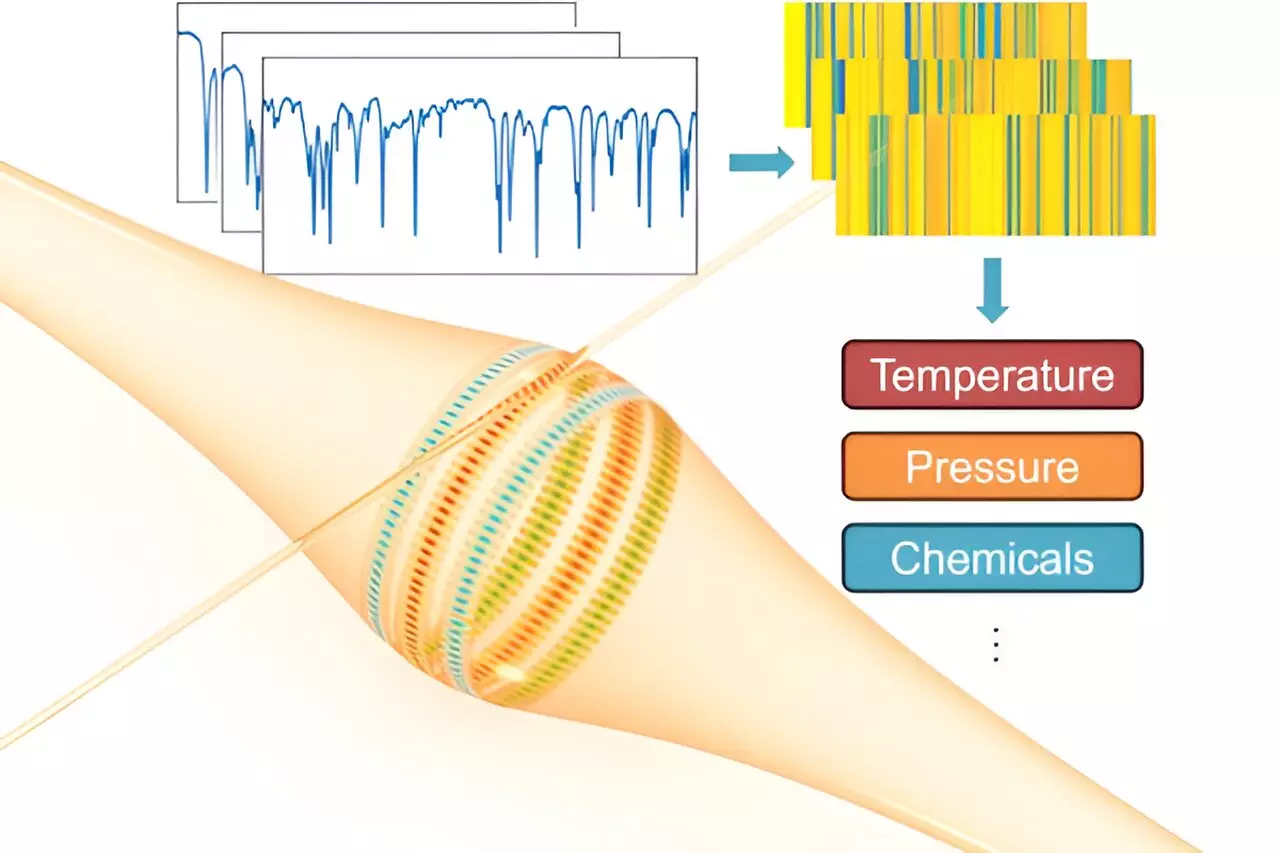Optical sensors have long been utilized in various fields such as biomedical diagnostics and environmental monitoring to detect and quantify physical and biochemical characteristics. One of the key components in these sensors is the whispering-gallery-mode (WGM) resonators, which are known for their ability to confine and concentrate light in a tiny circular path. While WGM resonators have been instrumental in high-resolution sensing applications, they have faced limitations in their dynamic range, resolution, and accuracy. However, a recent study by researchers at Washington University in St. Louis introduces a groundbreaking approach that may overcome these limitations and revolutionize the field of optical sensing.
In the study published in the journal IEEE Transactions on Instrumentation and Measurement, Lan Yang and Jie Liao from the Department of Electrical & Systems Engineering at Washington University introduce the concept of optical WGM barcodes for multimode sensing. This innovative technique allows for the simultaneous monitoring of multiple resonant modes within a single WGM resonator, leading to a broader range of measurements that can be achieved. By considering distinctive responses from each mode, the researchers were able to vastly expand the capabilities of WGM sensing.
WGM sensing relies on a specific wavelength of light circulating around the perimeter of the microresonator, with any molecule encountered causing a shift in the resonant frequency of the light. The introduction of multimode sensing enables the detection of multiple resonance changes in wavelength, rather than just one. This advancement results in greater resolution, accuracy, and the ability to sense more particles. In comparing single-mode and multimode sensing, the researchers found that the range for multimode sensing is potentially limitless, offering a significant improvement over the conventional methods of WGM sensing.
The commercial applications of multimode WGM sensing are vast, with potential uses in biomedical, chemical, and environmental sectors. In biomedical applications, researchers can leverage the sensitivity of the sensors to detect subtle changes in molecular interactions, leading to improved disease diagnosis and drug discovery. Environmental monitoring can benefit from the ability to detect minute changes in parameters such as temperature and pressure, enabling early warning systems for natural disasters and pollution monitoring in air and water.
The new technology introduced by Yang and Liao also allows for continuous monitoring of chemical reactions, opening up possibilities for real-time analysis and control of processes in fields like pharmaceuticals, materials science, and the food industry. The ultrahigh sensitivity of WGM resonators enables the detection of single particles and ions, providing valuable insights into chemical processes. Multimode sensing further enhances this capability, allowing for a more comprehensive exploration of unknown substances.
The development of optical WGM barcodes for multimode sensing represents a significant advancement in the field of optical sensors. By overcoming the limitations of traditional WGM resonators, researchers are now able to achieve greater accuracy, resolution, and sensitivity in their sensing applications. The applications of this technology in various sectors hold promise for improving disease diagnosis, environmental monitoring, and chemical process control. With continuous innovations in optical sensing technology, the future looks bright for the development of advanced sensing capabilities.


Leave a Reply